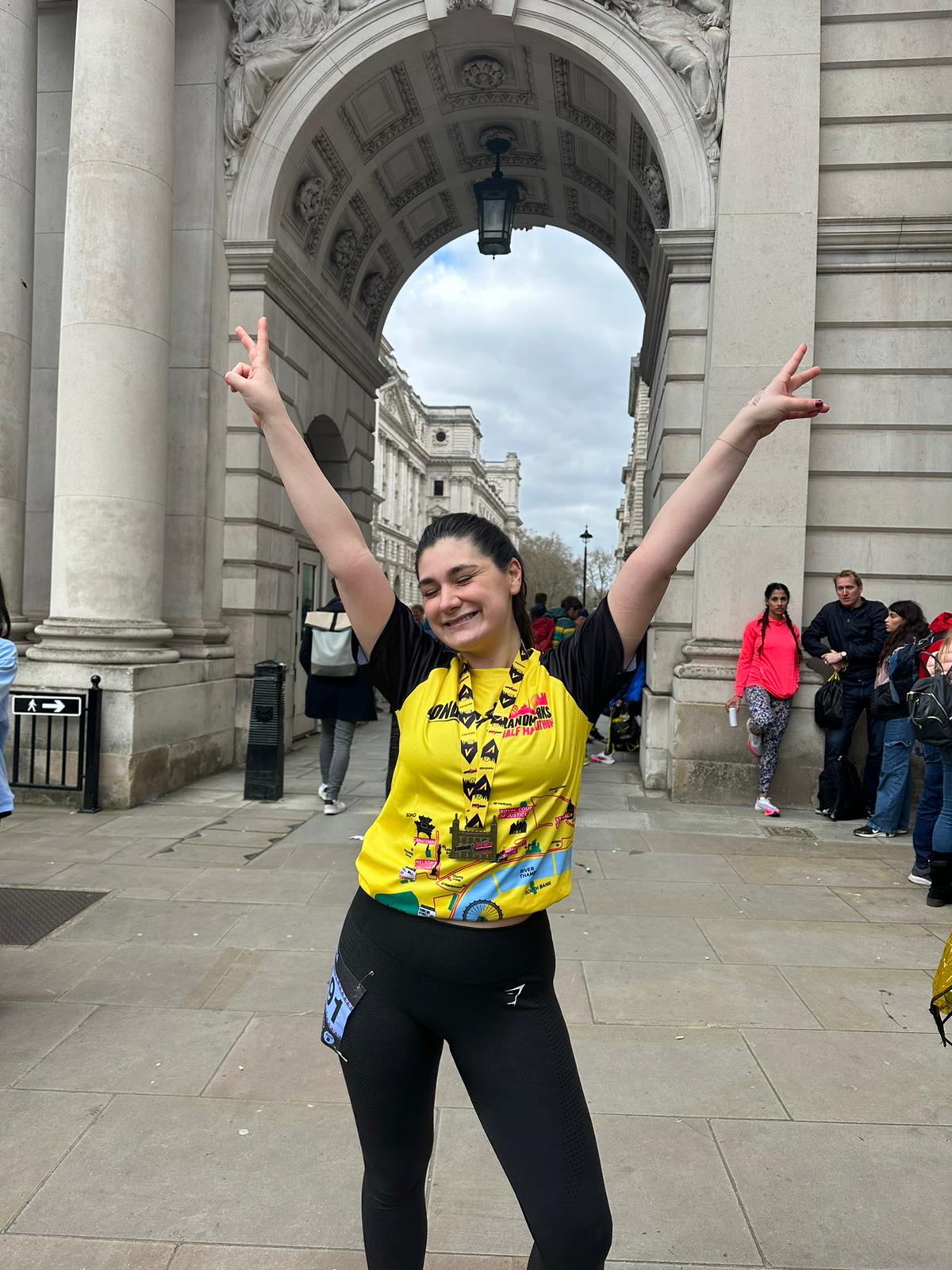
You'll likely have heard of high intensity interval workouts, once hailed as the bread-and-butter of workouts. Hailed for their metabolism-boosting and fat-burning abilities, they're raved about by top personal trainers spanning Joe Wicks, Kayla Itsines and Jillian Michaels and practised by celebrity royalty including Beyonce, Gigi Hadid and Margot Robbie. That said, this article isn't about that - rather, about giving up HIIT workouts altogether in a bid to fall in love with exercise again.
Let's start from the beginning. I'm a health contributor here at MC UK and have always loved movement, often being the first to jump at the chance to try a new sweat session. You name it, I've probably tried it - from football, to volleyball, even trapeze, I've given them all a go in my time.
Some have led me to great personal achievements and others - like gruelling HIIT sessions that made my heart rate skyrocket and gave me DOMs for days - have taught me some important lessons.
Like? That the most important lesson when it comes to working out is finding one that you enjoy. Truth be told, it's the only way you'll stick at it and build a consistently healthy lifestyle. I've learnt a lot of fitness lessons over the years, but my journey with HIIT has taught me the biggest lesson of all. Keep scrolling to read why, and don't miss our guides to free home workouts, arm workouts, and low impact workouts, while you're here.
Giving up HIIT changed my relationship with exercise - here's how
A little background on my relationship with HIIT workouts, first. They became my go-to during the pandemic as I'm sure they did for many of you, too. Home workouts were our only option - studios were shut, prices for gym equipment went through the roof, and there were limitations meaning we could only run.
After finding a workout programme that seemed adequate for me, I threw myself in at the deep end, doing HIIT workouts six days a week. Never one to shy away from a challenge and as someone with a base level of fitness, I decided to aim an average of 40 to 50 minutes per session.
Spoiler alert: the pandemic impacted both my mental and physical health, as it did so many. Being stuck indoors and largely only having these workouts to focus on for an endorphin boost, I quickly became obsessed with them. I felt good, looked good, and became completely convinced that these were the only workouts that worked for my body.
I'd convinced myself that the increased amount of time I was spending at home during quarantine meant more "rest time" during workouts, allowing myself only one day off from exercise, ignoring my body’s natural signs of rest and soldiered on.
Fast forward three months, though, and I started noticing some worrying symptoms - excessive bloating, fatigue, and lethargy. I was constantly stressed, and while we all were at this time, I felt like I couldn't switch off and was constantly on edge. Most importantly, though, I lost my period - a surefire sign that something was up.
I had quickly reached a point where I was creating more damage than good.
Running through what could be causing my symptoms in my mind, I began to wonder whether it could be my new workout routine. It couldn't be - right? Workouts give you energy and boost your mood, rather than having the opposite effect? Well, if you're overdoing it like I was, not so much.
How I figured out that HIIT wasn't right for me
The main problem for me came in believing the many influencers on my social media feed telling me that HIIT was the "best" workout and buying into a universal "one size fits all" approach to working out. I now know that the best workout is the one that works for you and your body - but I learnt that the hard way.
Why isn't HIIT for everyone, then? "While HIIT can deliver impressive results, its impact varies from person to person," explains Lucie Cowan, Master Trainer at Third Space. " Biological and lifestyle factors play a significant role in determining how well an individual tolerates high-intensity training. Women who are already under high stress might find that adding HIIT to the mix exacerbates stress levels rather than improving fitness which can lead to a cascade of hormonal issues, including disrupted cortisol rhythms and thyroid dysfunction."
As someone that had been previously diagnosed with genetic ulcerative colitis, I was also ignoring the impacts that HIIT could potentially have on my body. "Some women naturally have a more sensitive stress response system, making them more susceptible to the negative effects of overtraining," explains Cowan. "For them, HIIT might tip the balance towards hormonal irregularities and even adrenal fatigue, where the adrenal glands struggle to keep up with the body's demands for stress hormones."
As I touched on, my biggest wake up call came when I lost my period. It was the first time in my life I'd experienced an irregular menstrual cycle and signalled that something had to change. While it's important to point out here that a lot of factors contributed to this, not just the HIIT workouts, it's important to know about the impact over-exercising can have on your cycle.
"Constant stress can impair the hypothalamic-pituitary-ovarian axis, causing major hormonal irregularities. Training intensely often can lead to the complete cessation of menstrual cycles, known as hypothalamic amenorrhea, a condition characterized by the cessation of menstrual cycles due to the hypothalamus perceiving excessive physical stress," says Cowan.
This sadly, has become somewhat normalised for women amongst the fitness scene, she reflects when we chat. "Intense workouts, such as HIIT, can disrupt this balance by triggering excessive stress responses," she goes. How? Well, because "elevated cortisol levels - often caused by overtraining - result in hormonal imbalances and irregular periods. This disruption extends beyond the gym, impacting energy levels, sleep quality, and emotional well-being, hair and nail growth, sex drive and so much more, potentially leading to osteoporosis later in life. In the quest for optimal fitness, some women unknowingly compromise their long-term well-being."

Getting to the root of the problem
Don't get me wrong - every expert I spoke to confirmed that HIIT can be a great workout option if you're short on time and want to get your heart rate up. That said, they also said it's not great for people with hormone imbalances, heart issues or joint pain, as it can exacerbate all of these issues.
As Phil Carpenter, advanced personal trainer at PureGym Portsmouth, explains: "When delivered properly, a HIIT workout is going to leave you on your back, gasping for air and exhausted. If this isn’t the case, then it’s likely you haven’t put in the maximum effort required to gain benefit from this type of session."
He goes on: "These types of workouts are incredibly beneficial for some but potentially harmful for others. Truth be told, most of us do not have the solid cardio base to endure a full HIIT class, and so this is where gradual exercise comes in as the more effective method to build your endurance safely and sustainably."
Therein lay my problem - in my lockdown haze, I'd forgotten that there is a whole world of workouts out there that I'd not only find more enjoyable but find more effective in the long run.
My transition
Taking all of these warning signs into account, I knew it was time to reevaluate my workout routine and general lifestyle. My journey started by seeking professional advice - I wanted to make sure I regained my period cycle, as well as lowering both my stress and cortisol levels.
This meant lowering my HIIT sessions to three times a week and incorporating two low intensity workouts of my choice, which forced me to tune into my body and move the way I desired.
By taking this step back and listening to my body. I realised that I'd been looking at my workouts as a task - rather than something to enjoy - and hurting my body in the process.
Of course, it was hard at first as I had to fight off thoughts that stemmed from my previous toxic outlook on working out. However, I was able to slowly step away and focus on the joy that came with tuning into my body’s wants and needs.
I quickly found myself looking forward to those days when I would sporadically do Pilates, yoga, or light strength training - no two days were ever the same.
This also led me to explore and find joy in movement more as I was able to try out different workouts, new routines, and exercises that allowed me to relax, rather than cause more stress.
Shifting my perspective from working out being a task to something that I got to do as a privilege - with an "I don't have to do this, I get to do this" daily mantra -hugely boosted my confidence and reinstated the joy I once found in moving my body. "It’s always important to remember that exercise shouldn't feel like punishment - movement should benefit you," confirms Carpenter.

Where I am now
It took me a year to fully understand what workouts work for me and find a routine that works for both my lifestyle and body. That said, finally finding that balance has been game-changing - I've seen so many benefits, from better energy to less bloating. I've also got my period back, a surefire sign I'm moving in a way that works for my body.
Learning to tune into my body and move in a way that works for me has been one of the best things I've ever done. Now, I hope my story will inspire others to do the same. As Cowan stresses: "It's vital to remember that more isn't always better. High-intensity training, like any tool, needs to be wielded wisely and tailored to individual needs. Women should prioritise their hormonal health by adopting a balanced fitness regimen that respects their body's limits and allows for proper recovery."
"Whether it's engaging in mindfulness practices, incorporating yoga and stretching, or simply embracing active rest days, taking a holistic approach can lead to not only improved physical fitness but also sustained hormonal harmony and a healthier, more sustainable mindset towards exercise," she goes on.
Removing toxic thoughts when it comes to working out inspired me to run my first half marathon this year, something I'll never forget.
If you're trapped in a vicious cycle of pushing yourself through workouts that you fear might not be benefiting your body, ask yourself this: am I honouring my body?
All bodies have different needs and what works for me, won't work for the next person. Working out what works for you is key, as I discovered. Ultimately, working out is about boosting your mood and finding joy - move in whatever way that means for you.







